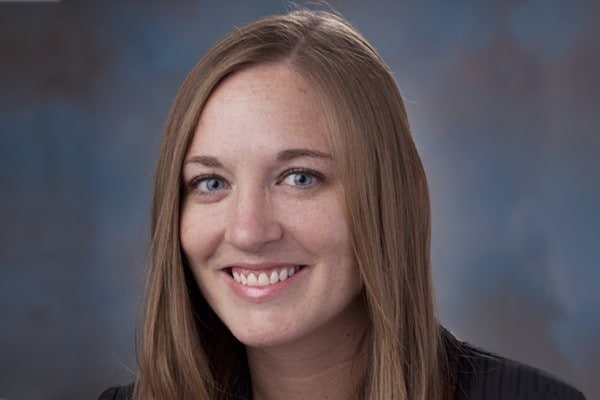Meet the data scientist: Kristin Carney
By Stephanie Robertson, SAS Insights Editor
When Kristin Carney graduated with a BS in mathematics, she wasn't sure what she wanted to do with her degree. That's when she began researching data science. As part of our Data Scientist Series, we interviewed Carney, who works in Research & Analysis for World's Foremost Bank.
What’s your background and education?
Carney: I have a BS in mathematics and an MS in statistics from the University of Nebraska-Lincoln. I was the 2013 Vice President of the American Statistical Association Nebraska Chapter and the 2014 President of the American Statistical Association Nebraska Chapter.

What skills help you most as a data scientist?
I like to solve puzzles, and as a data scientist for a credit card portfolio, those puzzles often look like questions about how to mitigate risk and increase profit. Fortunately, in this industry there’s a lot of data.
In my opinion, logical reasoning is the most important skill for data scientists, closely followed by communication skills, because you have to explain your analysis. You also need to be detail-oriented. I believe I’ve been more successful due to my curiosity. I want to know everything. My family pokes fun at me since my favorite question is “why?”
When did you figure out you wanted to be a data scientist? What motivated you to become one?
I decided I wanted to be a data scientist after I graduated with my bachelor’s degree. I didn’t want to be a math teacher, and started researching other professions in which my degree was advantageous. I take a lot of pride in what I do and in the ability to help others make more informed decisions. To do so, I needed to learn how to answer questions using research and analytics.
What department do you work in and who do you report to?
I work in Research & Analysis for World's Foremost Bank (owned by Cabela's Inc). I report to the vice president of portfolio management.
How long have you had your job and were you hired specifically to be a data scientist?
I started at Cabela's in July 2010 as a research analyst. I transitioned to a statistician role in August 2010 and started my current position as a risk manager in April 2013.
Do you work on a team? If so, what’s the makeup of your team?
Our team is made up of all data scientists and their managers. I manage a team of between four and eight individuals. They are all analytical problem solvers. Some of them have statistical modeling experience and some do not. Their education is typically in mathematics, statistics or economics.
What’s your job like? Is there a typical day or is each day different? Can you give us a basic idea of what you do and the kinds of projects you work on?
On a typical day, I brainstorm and problem solve how to answer questions that come from the business with my team, I review analysis and recommendations completed by my staff, and I attend a variety of meetings.
Is your job what you expected it to be?
My job as a statistician was close to what I expected it to be, but I was surprised by how basic statistics knowledge was the primary skill needed.
What’s your biggest challenge?
My biggest challenge has been in my management role, helping my staff obtain resources and budget to execute changes based on analytical findings.
What’s your biggest accomplishment thus far?
My biggest accomplishments are seeing my team succeed, gaining experience in decision making, and acquiring the ability to say no professionally. Sometimes a decision, even if it is the wrong one, is better than no decision at all – and there are only so many hours in a day and so many resources.
What do you enjoy doing in your spare time?
I enjoy watching sports so much that I have three TVs in my family room. I’m a Philadelphia and Nebraska fan. Go Eagles, Phillies and Huskers especially! I also enjoy golfing, boating and playing with my French Bulldog, Wilbur. Over the next year, I'll also be planning a wedding with my fiancé.
Read More
- Whether you want to find out what data scientists do, hear from some real-life data scientists or learn how to become one, check out all the articles in our Data Scientist Series.
- Get your data scientist hiring guide.
- Browse other Q&As with data scientists:
Get More Insights
Want more Insights from SAS? Subscribe to our Insights newsletter. Or check back often to get more insights on the topics you care about, including analytics, big data, data management, marketing, and risk & fraud.
